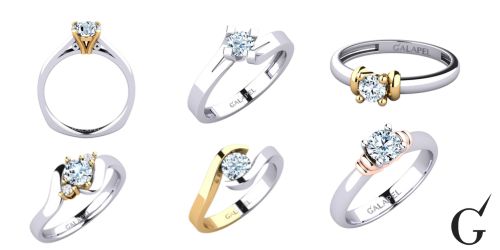The Cultural Tapestry of Engagement Rings: A Global Perspective
Engagement rings symbolize love, commitment, and the beginning of a lifelong journey for a couple. While this concept is universal, the execution is remarkably diverse across cultures. This article delves into the fascinating variations of engagement rings around the globe. Understanding these nuances offers a richer view of how love is celebrated in different societies.
Contents
- 1. Introduction
- 2. Western Traditions: Diamonds are Forever
- 3. Hindu Traditions: Not Just About the Ring
- 4. Middle Eastern Elegance: A Golden Affair
- 5. Jewish Customs: Symbolism Over Style
- 6. Eastern European Simplicity: One Ring to Rule
- 7. Japanese Modernity: A Blend of Cultures
- 8. African Diversity: Beyond the Material
- 9. Conclusion
1. Introduction
Engagement rings symbolize love, commitment, and the beginning of a lifelong journey for a couple. While this concept is universal, the execution is remarkably diverse across cultures. This article delves into the fascinating variations of engagement rings around the globe. Understanding these nuances offers a richer view of how love is celebrated in different societies.
2. Western Traditions: Diamonds are Forever
In Western cultures, engagement rings usually feature a diamond or another precious stone, set on a metal band. Traditionally, men propose to their partners with these rings, which are then worn on the fourth finger of the left hand. The marketing campaigns of the 20th century cemented diamonds as the stone of choice for these love tokens.
3. Hindu Traditions: Not Just About the Ring
In India, engagement rings are often part of a broader tradition that may include various other jewels and gifts. Both men and women wear engagement rings, frequently designed to match each other. Sometimes, bangles, necklaces, or anklets replace the ring altogether, representing a different yet equally significant pledge of commitment.
4. Middle Eastern Elegance: A Golden Affair
Gold rings are a staple in Middle Eastern engagement traditions. Both men and women might wear them, and they are often straightforward in design. This simplicity aligns well with Islamic principles advocating modesty and humility in personal ornaments.
5. Jewish Customs: Symbolism Over Style
In Jewish culture, the ring takes a backseat, often becoming prominent only during the wedding ceremony. When used, the ring is expected to be plain with no engravings or stones, symbolizing an unbroken, eternal bond between the couple.
6. Eastern European Simplicity: One Ring to Rule
In countries like Russia and Ukraine, the engagement ring and the wedding ring are usually the same. These rings are typically simple bands of gold or silver and are worn on the ring finger of the right hand.
7. Japanese Modernity: A Blend of Cultures
In Japan, the practice of giving engagement rings is relatively recent and heavily influenced by Western traditions. Both men and women may wear engagement rings, often featuring diamonds, as a symbol of their upcoming nuptials.
8. African Diversity: Beyond the Material
Engagement customs in various African cultures often extend beyond material tokens like rings. Livestock or other valuable possessions may represent the engagement, although rings are becoming increasingly popular due to Western influence.
9. Conclusion
Engagement rings, though universally symbolic of love and commitment, differ vastly in design, tradition, and cultural significance. This diversity enriches our understanding of global expressions of love and promises a more inclusive perspective on engagement rituals worldwide.











